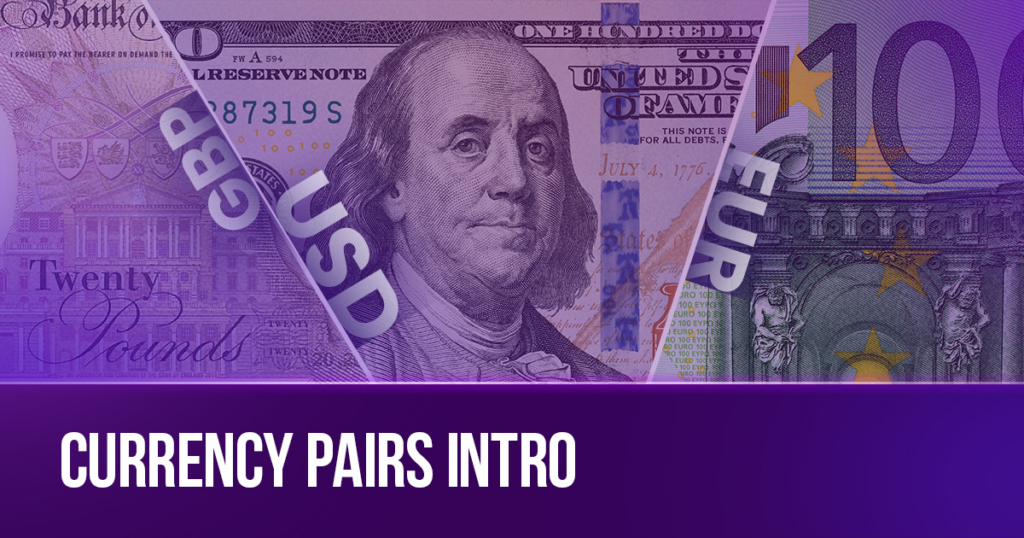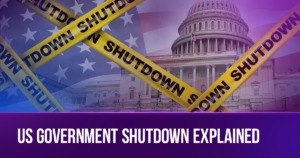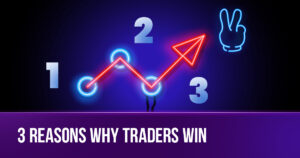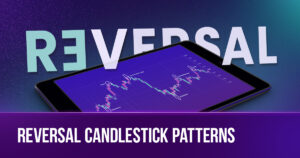This article is designed to demystify the basic concepts of currency pairs in the forex market. By the end, you will have gained a firm grasp of how to buy and sell these pairs through True Forex Funds. You’ll learn to differentiate between major, minor, and exotic currency pairs, and get a glimpse into other trading instruments.
Introduction
The objective of this article is to equip novice traders with a robust understanding of currency pairs and other CFD (Contract-for-Difference) assets. Our focus is to prepare you for a successful trading journey with True Forex Funds. But before diving in, it’s critical to grasp the key products traded in the forex market.
Ready to start your trading journey?
Get fundedA market essentially is a stage where buyers and sellers converge to trade products at a mutually agreeable price. Let’s dissect this definition of the market:
- The Product: In forex, currencies are the product which is always traded in pairs.
- The Participants: Every trade needs a buyer and a seller, also known as a party and a counterpart.
- The Price: An exchange can only take place when the price is acceptable to both participants.
The forex market operates akin to a supply chain, with retail traders positioned at the end. These traders interact directly with market makers, entities that constitute the next rung above retail traders in the forex market’s hierarchy.
Keep these points in mind as we delve into the dynamics of forex trading.
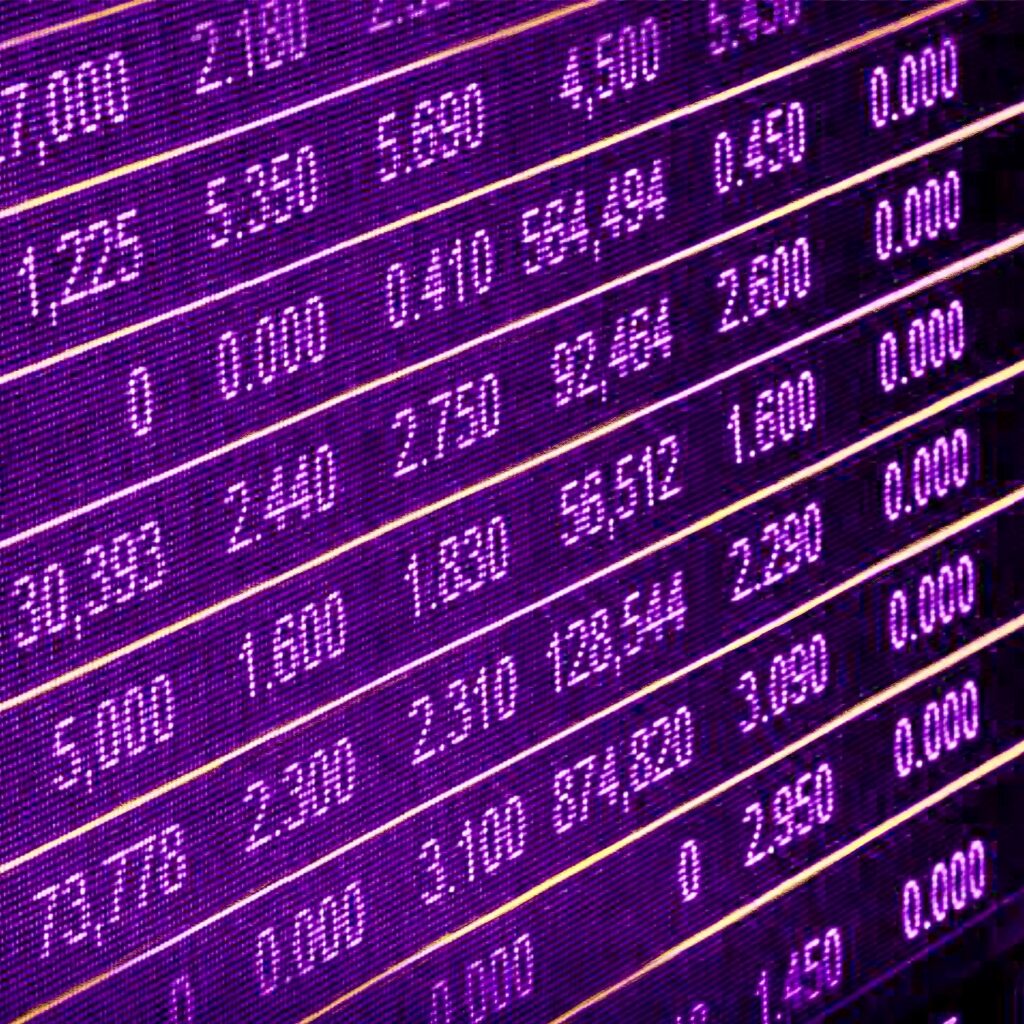
What is a Currency?
Currencies are the lifeblood of the global economy, serving as a medium of exchange for goods and services. With globalization propelling interactions between governments, corporations, and individuals worldwide, some currencies have gained international status, fueling cross-border exchanges (i.e. international trades).
International trade is a broad term encompassing activities such as foreign investments, commodity trading, mergers and acquisitions, and even straightforward payments between individuals. These transactions need a reliable medium of exchange—currencies.
How Does Currency Trading Work?
Currency trading extends beyond facilitating international trade. The ebb and flow of exchange rates provide a fertile ground for traders to profit from these fluctuations, as currency exchange rates are in constant motion. This continuous change forms the bedrock of the forex trading market.
In forex trading, actual physical exchange of currencies is a rarity. Picture trying to physically trade a million dollars for euros or Swiss francs—impractical, right? Instead, the contracts based on price differentials of the currencies are traded. This approach, known as Contracts-for-Difference (CFD) trading, allows forex traders to buy or sell a contract based on the exchange rate differential of two currencies in a pair.
What is a Currency Pair?
A currency pair is a combination of two currencies that are listed on the asset index of a forex trading platform. Currencies are always traded in pairs, as the exchange rate quote is an expression of how many units of a particular currency is needed to buy 1 unit of another currency. Some forex platforms list as many as 180 currency pairs. For instance, the US Dollar is paired with several currencies such as the Euro, Pound, Japanese Yen, Swiss franc, Norwegian Krone, Swedish Krona, Russian Ruble, Mexican Peso, South African Rand, Hong Kong Dollar, Singaporean Dollar, Hungarian Forint, and many others.
A currency is usually represented by a three-letter abbreviation. These symbols were derived from ISO 4217, which is the International Organization for Standardization’s code for the representation of all currency pairs in the world. The three-letter abbreviations are derived as follows:
– the first two letters areis the ISO 3166-1 alpha-2 country code for the country of origin of the currency. Hence, the first two letters of the Eurozone for the “EU” appear as the first two letters of the single currency, the Euro. Similarly, JP and GB are derived from Japan and Great Britain, and are used to represent the first two letters in the currencies Japanese Yen (JPY) and Great British Pound (GBP).
– the third letter is the initial of the currency’s name. So the Y in CNY is the Yuan, the currency of China. The “D” is the first letter of the name of the US currency, the Dollar. Other currencies that are also named “Dollar” (Barbadian Dollar, Hong Kong Dollar, Singaporean Dollar, etc) all adopt the D as the third letter of their currencies as follows: BBD, HKD, SGD.
In writing currency pairs, the two currencies are expressed either as a combination of the three letters of each pair written together (EURUSD, GBPUSD, USDJPY), or you may see a forward slash used in between the pairs (EUR/USD, GBP/USD, USD/JPY).
Components of a currency pair
You may have noticed that the way in which a currency pair is written displays one on the left side and the other on the right. The currency quoted on the left is known as the base currency, while the one on the right is the counter-currency or quote currency.
The base currency is always expressed as 1 unit. The price of the base currency is not shown in the price quote. What is shown in the price quote is the number of units of a counter currency that 1 unit of a base currency can purchase.
For instance, if the GBPUSD is said to trade at 1.2460, it means that 1 unit of the base currency (GBP) can be exchanged for 1.2460 US Dollars (the quote currency). The price quote is always that of the counter/quote currency that can exchange for 1 unit of the base currency.
Trade with True Forex Funds
Get fundedHow to read a currency pair quote (bid and ask prices, spread, and pip)
The simplest way of expressing the exchange rate of the most traded currency pairs is by writing a single price, which is usually the number of units of the counter currency that can be bought with one unit of the base currency. But in reality, the exchange rate of the two currencies that make up a forex pair is usually expressed with two prices, separated by a forward slash. The two prices are known as the bid price and the ask price.
All the forex pairs have a bid price and an ask price, and that these two prices are not the same values. So what is the bid and ask price all about, and why are these values not the same?
Bid price
The bid price is the price at which a dealer will buy the base currency from the trader. It can also be defined as the price at which the trader will sell the base currency to the dealer. For the purpose of the trading styles on MT4 and MT5, the bid price is defined as the price at which a trader’s sell order on a forex pair will be executed. The bid price is ALWAYS lower than the ask price.
The bid price on the AUD/USD pair in the snapshot above is 0.66249. If a trader sets a sell order on the AUD/USD at market price, this is the price at which the order will be executed.
Ask price
The ask price is the price at which a dealer will sell the base currency to the trader. It can also be defined as the price at which the trader will buy the base currency from the dealer. For the purpose of the trading styles on MT4 and MT5, the ask price is defined as the price at which a trader’s buy order on a forex pair will be executed. The bid price is ALWAYS higher than the ask price.
The ask price on the AUD/CHF pair in the snapshot above is 0.59400. If a trader places a market BUY order on the AUD/CHF the trade will be executed at this ask price. Notice that this price is higher than the bid price.
So the question that logically arises is this: why is the ask price always higher than the bid price? The answer is that the dealer has to make a profit from the trade, and the profit is the difference between the bid price and the ask price, which is known as the spread. The spread is calculated in pips or points, and the monetary value of the spread for each forex pair is automatically deducted from the trader’s account when a trade is executed.
Buying and Selling Currency Pairs
To make money from the forex market, you do not necessarily have to trade the most traded forex pairs, or to trade what everyone else is trading. The broker used by True Forex Funds has more than 100 forex pairs. There are currency pairs that are not even available on other platforms, and the essence is to allow you to make a choice of what can deliver profits for you and for the company. That is the whole essence of the evaluation programs.
How to trade currency pairs in forex
The beauty of forex trading is its inherent flexibility; traders can profit from both rising and falling markets. The first step in understanding how to trade currency pairs in forex is to understand the order types.
A market order is the most basic type of trade order. It instructs your broker to buy or sell a currency pair at the best available current market price. The main advantage is that the trade is executed almost instantly, guaranteeing that your order will be filled, but not the price at which it will be filled. This order type is best when the execution speed is the priority.
- Buy (long) orders
When a trader expects that a currency’s value will rise in the future, they can place a buy order, also known as going long. By buying, they are essentially speculating that the currency pair’s price will increase. For instance, if a trader believes that the EUR/USD rate will rise, they might decide to buy (or go long on) the pair. If the price does indeed rise, the trader can sell the pair at a higher price for a profit.
- Sell (short) orders
In contrast, when a trader anticipates that a currency’s value will drop, they can place a sell order, also known as going short. By selling, they are speculating that the price will decline. For instance, if a trader thinks that the GBP/USD rate will fall, they might decide to sell (or go short on) the pair. If the price does drop, the trader can buy the pair back at a lower price for a profit.
Pending orders are instructions to your broker to open a trade when certain preconditions, such as reaching a specific price, are met. There are four types of pending orders:
- Buy Limit: An order to purchase a currency pair at a specified price or lower.
- Sell Limit: An order to sell a currency pair at a specified price or higher.
- Buy Stop: An order to buy a currency pair when its market price rises to a specific level.
- Sell Stop: An order to sell a currency pair when its market price falls to a specific level.
Pending orders give traders more control over their entry points, enabling them to take advantage of strategic opportunities even when they’re not actively monitoring the market. It’s essential to use these orders wisely, considering market volatility and price gaps.
All orders would have ended in profit. But the long orders are all at different price levels. The Market Buy was at a current price of 54.02. A trader expecting prices to drop before rising would set a Buy limit order at a previous support, like in the snapshot. A trader wanting confirmation that prices would keep going higher after breaching a critical point (such as a resistance break) would use a Buy Stop order.
Calculation of profit and loss in forex trading
How do you calculate profit and loss in forex trading? Here is how to do it on the MT4 and MT5 platforms.
Profit/loss = monetary value of pip/point X number of pips moved.
If you trade a Standard Lot on the EUR/USD, and the entry price was 1.1103 and exit price is 1.1173, what would be the calculation of the profit or loss made from this trade?
We can see that the trade went in an upward direction. The number of pips in the price move is 1.1173 – 1.1103, which is 0.0070 or 70 pips. A Standard Lot is worth $10 per pip, so the value of this move would be 70 x 10 = $700.
Since the trade went in an upward direction, a long order at the entry price of 1.1103 and exit price of 1.1173 would have made a profit of $700. If the trader had used a short order, this trade would have ended in a loss.
Refer to the article on Understanding TFF’s Contract Specifications on MT4 and MT5 for a detailed explanation of how to work out the monetary value per tick, pip or point of your preferred asset.
Factors affecting currency pair prices (interest rates, economic indicators, political events, etc.)
Major Currency Pairs
Currency pairs are classified into three:
- Major currency pairs
- Minor currency pairs
- Exotic currency pairs
What are major currency pairs? Please understand that there is a difference between the major currencies and the major currency pairs.
The major currencies are the currencies with the highest traded volumes and liquidity. These currencies are:
- Euro
- US Dollar
- Japanese Yen
- Swiss franc
- Canadian Dollar
- Australian Dollar
- New Zealand Dollar
The major currency pairs are the various pairs that are formed by combining these major currencies together.
Why are major currency pairs important in forex trading?
- They are the currency pairs with the highest liquidity, and largest trading volumes.
- The major currency pairs attract the lowest spreads in the market, which is a plus for scalpers.
- These major currency pairs come from countries that dominate the economic data on the forex news calendar.
- They are free-floating currency pairs, and are highly sensitive to supply-demand dynamics.
Other Currency Pairs
What are minor currency pairs? These are currency pairs that do not contain the US Dollar. They are marked by less liquidity and wider spreads. Some of these minor currency pairs also contain some major currencies, but without USD participation.
Exotic currency pairs are currencies that originate from countries that are deemed to be emerging markets. They are less liquid than minor pairs and consequently, carry very large spreads. The exotic currency pairs sometimes feature the US Dollar. Exotic currencies are regarded as risky currencies. Here are some of their characteristics:
- The exotic currency pairs are usually commodity-tied (Brazilian Real, Mexican Peso, Norwegian Krone, South African Rand).
- The countries of origin are usually high interest rate environments, attracting investments when interest rates in Western economies are at near-zero levels.
- Once interest rates in the Western economies start to rise, investment capital starts to migrate away from the emerging economies, causing their value to depreciate against currencies such as the US Dollar.
- The interest rate differentials can sometimes be the basis of the carry trade where the differential is wide.
Benefits and risks of trading minor and exotic currency pairs
There are benefits and risks of trading minor and exotic currency pairs. Some of these are examined below.
Benefits
- While the spreads of the minor and exotic currency pairs can be very wide, the range of price movements are also very wide and can produce spectacular returns for the trader if trades on these pairs are profitable.
- Since they do not contain the US Dollar, the impact of US news on the currency markets can be excluded from the trading strategy. For instance, if employment numbers from the US and Australia are strong, the impact on the AUD/USD would be canceled out. However, you may be able to trade the AUD against another currency (EUR/AUD, AUD/CAD, GBP/AUD) if there is a fundamentally opposite event in the other currency.
- Increased price inefficiency can produce stellar trading opportunities for experienced, discerning traders.
Risks
- Due to the illiquid nature of these pairs, the spreads are wider and therefore attract higher trading costs to the trader. This could be impactful for scalpers who typically try to profit from small price movements in a currency pair.
- Emerging markets are characterized by increased risk of political instability, and these can bring about unexpected shocks to the currencies affected. An example of this was the 2017 sudden sack of the South African finance minister Pravin Gordhan by President Jacob Zuma, a decision which impacted the USD/ZAR pair.
- Exotic currency pairs are not suited for beginners.
Other Trading Instruments (CFDs)
If you look at a typical forex platform, you will notice that currency pairs are not the only assets listed for trading. Other assets such as precious metals, commodities, bonds, and stock indices are found on forex platforms. These are all known as Contracts-for-Difference (CFD) assets.
These assets are found in other asset classes in traditional markets, where exchange and physical delivery of the assets occur. For instance, some banks buy metals in large quantities and store them in warehouses, from where clients can pay for them and have them physically delivered. But in CFD trading, there is no physical exchange of the listed assets. What traders trade is the contracts that are based on the price changes that occur on these assets in their underlying markets.
Become a funded trader
Get fundedCFD instruments track the price changes in the underlying markets. For instance, the US Oil (West Texas Intermediate crude) and UK Oil (Brent crude) track the prices of crude oil in the New York Mercantile exchange (NYMEX) and also on the COMEX platforms. Gold, copper, platinum, palladium and silver CFD contracts track the price changes of these metals on the London Metal Exchange (LME). Agricultural commodity CFDs (cocoa, corn, wheat, etc) track the price changes of these commodities as they are traded on the Chicago Mercantile Exchange (CME). Stock index CFDs track the price changes of their respective stock indices.
Difference between trading currencies and other instruments
There are differences between forex trading and trading of other CFD instruments.
- The unit of price changes are measured in points for other CFD assets, while they are measured in pips in forex pairs. Refer to the article on Understanding TFF’s Contract Specifications on MT4 and MT5 for details.
- The leverage for forex trading is generally higher than for stock index CFDs and other CFD assets.
- Consequently, margin requirements for CFD assets are much higher than forex, which increases the minimum capital required to trade these other CFD instruments.
- The range of price moves for other CFD instruments is much higher than for forex trading.
Conclusion
In summary, the realm of forex trading is anchored around the foundational concept of currency pairs and the intricate relationship between buyers and sellers in the market. With currencies traded in pairs and the essential interplay between the parties and their counterparts, it sets the stage for a vibrant exchange in which prices fluctuate based on mutual agreement. As budding traders set out on their journey with True Forex Funds, it is imperative to comprehend the inherent dynamics of this market. By grasping the basic structure, mechanisms, and roles of different players, they will be better poised to navigate the complexities of the forex landscape successfully.
Start trading with True Forex Funds
Get fundedFAQ
Currency pairs are the foundational units of trade in the forex market. In every transaction, one currency is exchanged for another, which means currencies are always traded in pairs.
Currency pairs can be categorized into major, minor, and exotic pairs, each with its characteristics and significance in the market.
Major currencies refer to the most traded and liquid currencies such as Euro, US Dollar, Japanese Yen, etc. The major currency pairs are combinations of these major currencies traded against each other.
These pairs can produce high returns due to wide price movements, are not always influenced by US news, and may present excellent trading opportunities due to increased price inefficiencies.
The bid price is the price at which a dealer will buy the base currency, while the ask price is where they’ll sell it. The bid price is always lower than the ask price. The difference between them, known as the spread, represents the dealer’s profit from the trade and is automatically deducted from the trader’s account upon execution.
CFDs are trading instruments that track the price changes of underlying assets in their respective markets. They include precious metals, commodities, bonds, and stock indices.

